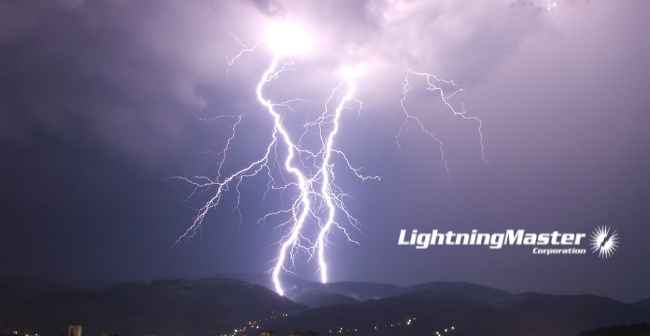How is damage caused by lightning strikes categorized?
Lightning is one of the most prominent weather-related risks that can cause property damage, downtime, and injuries. While the chances of getting struck by lightning are low, your facility has a far greater chance of experiencing damage from direct and indirect lightning strikes. You can never predict when it may happen. Therefore, having adequate lightning protection is key to minimizing risks and maximizing safety.
To understand the gravity of this risk for your facility, you should educate yourself with the types of lightning damage. Knowing how lightning damage occurs will give you a better idea of how important it is to implement safety measures in advance.
-
Physical Damage Caused by Lightning Strikes
This type of lightning strike damage is perhaps one of the most evident and visible, for example, there is always latent moisture in concrete. If lightning strikes a building, the concrete is heated and can be blow off a building. Lightning strikes contain an intense amount of heat and current that can easily damage buildings, structures, equipment, and other objects. Given how powerful lighting is, it is no surprise that it can cause destructive property damage and costly downtime.
While physical damage can happen in many ways, fire is usually a common factor. For one, the temperature of a lightning strike can reach 50,000 degrees Fahrenheit, which is five times hotter than the surface of the Sun. Thus, when it passes through the Earth, it can heat the air significantly and potentially cause fires, especially if exposed to flammable materials.
When lightning strikes a building, power line, or any other structure, the extent of the damage depends on the current and object’s electrical response and grounding system. Lightning may also produce a shock wave that can damage concrete or brick.
-
Secondary Effect Damage
Lightning strikes always have indirect or secondary effects, which can cause varying degrees of damage. The point where lightning strikes will remain highly charged, the ground charge rushes toward that point after the initial strike, which can lead to arcing and induced currents in any equipment or structures. This arcing could be a potential risk or hazard for structures or tanks containing flammable material or vapor.
-
Electromagnetic Pulse Damage
A lightning strike always carries an electromagnetic pulse (EMP) that creates a momentary power surge. While the surge only lasts a short time, it has the potential to carry a large amount of voltage into circuit, making all appliances connected to an electrical system susceptible to over-voltage damage. Advanced electronics are more susceptible since they have smaller components that are more sensitive to higher voltages.
The risk with EMP effect damage is that facilities miles away from a strike could still be affected. The last thing you want is to discover your electronics and service wires have been damaged, so installing adequate protection should be at the top of your priority list.
-
Ground Reference Potential Charge Damage
Lightning damage occurs when current flows due to the difference in potential at two different locations. The difference in potential at the two locations can damage your electrical systems. Additionally, you’ll also need a well-designed grounding system and bonding between wires to properly protect your facility from further damage.
Protect Your Facility from Lightning Strike Damage
As highlighted above, lightning damage is no small matter. Thus, taking active steps to protect your facility and employees is a must. Lightning Master can help install, repair, and maintain certified lightning protection systems to ensure your safety. This is accomplished by implementing a three-pronged approach which includes bonding and grounding, surge protection, and structural lightning protection. We wrote the book on lightning protection for industrial facilities and have years of hands-on experience installing and maintaining effective lightning protection systems to mitigate lightning strikes. Contact us today to schedule a consultation for lightning protection systems for your facility.


